UNESCO
|
|||||
| Org type | Specialized Agency | ||||
| Acronyms | UNESCO | ||||
| Head | Director General of UNESCO
|
||||
| Status | Active | ||||
| Established | November 16 1945 | ||||
| Website | www.unesco.org | ||||
| Wikimedia Commons |
|||||
| Portal | |||||
|---|---|---|---|---|---|
United Nations Educational, Scientific and Cultural Organization (UNESCO) is a specialized agency of the United Nations established on 16 November 1945. Its stated purpose is to contribute to peace and security by promoting international collaboration through education, science, and culture in order to further universal respect for justice, the rule of law, and the human rights and fundamental freedoms proclaimed in the UN Charter.[1] It is the heir of the League of Nations' International Commission on Intellectual Cooperation.
UNESCO has 193 Member States and six Associate Members. The organization is based in Paris, with over 50 field offices and many specialized institutes and centres throughout the world. Most of the field offices are "cluster" offices covering three or more countries; there are also national and regional offices. UNESCO pursues its objectives through five major programmes: education, natural sciences, social and human sciences, culture, and communication and information. Projects sponsored by UNESCO include literacy, technical, and teacher-training programmes; international science programmes; the promotion of independent media and freedom of the press; regional and cultural history projects, the promotion of cultural diversity; international cooperation agreements to secure the world cultural and natural heritage (World Heritage Sites) and to preserve human rights; and attempts to bridge the world-wide digital divide.
Contents |
Structure
Three bodies are responsible for policy-making, governance, and day-to-day administration at UNESCO (United Nations Educational, Scientific and Cultural Organization).
- The General Conference
- The Executive Board
- The Secretariat
The General Conference is a gathering of the organization's member states and associate members, in which each state has one vote. Meeting every two years, it sets general policies and defines programme lines for the organization.
The Executive Board's 58 members are elected by the General Conference for staggered four-year terms. The Executive Board prepares the sessions of the General Conference and ensures that its instructions are carried out. It also discharges other specific mandates assigned to it by the General Conference.
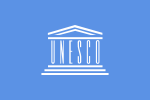
The Secretariat consists of the Director-General and his staff and is responsible for the day-to-day running of the organization. The Director-General, who serves as the public face of UNESCO, is elected for a (renewable) four-year term by the General Conference. The staff currently numbers some 2100, of whom some two-thirds are based in Paris, with the remaining third spread around the world in UNESCO's 58 field offices. The Secretariat is divided into various administrative offices and five programme sectors that reflect the organization's major areas of focus
Controversy and reform
UNESCO has been the centre of controversy in the past, particularly in its relationships with the United States, the United Kingdom, Singapore, and the former Soviet Union. During the 1970s and 1980s, UNESCO's support for a "New World Information and Communication Order" and its MacBride report calling for democratization of the media and a more egalitarian access to information was condemned in these countries as attempts to curb freedom of the press. UNESCO was perceived by some as a platform for communist and Third World countries to attack the West, a stark contrast to accusations made by the USSR in the late 1940s and early 1950s.[2] In 1984, the United States withheld its contributions and withdrew from the organization in protest, followed by the United Kingdom in 1985 and Singapore in 1986. Following a change of government in 1997, the UK rejoined. The United States rejoined in 2003, followed by Singapore on 8 October 2007.
Part of the reason for their change of stance was due to considerable reforms implemented by UNESCO over the past 10 years. These included the following measures: the number of divisions in UNESCO was cut in half, allowing a corresponding halving of the number of Directors — from 200 to under 100, out of a total staff of approximately 2,000 worldwide. At the same time, the number of field units was cut from a peak of 1287 in 1998 to 93 today. Parallel management structures, including 35 Cabinet-level special adviser positions, were abolished. Between 1998 and 2009, 245 negotiated staff departures and buy-outs took place, causing the inherited $12 million staff cost deficit to disappear. The staff pyramid, which was the most top-heavy in the UN system, was cut back as the number of high-level posts was halved and the “inflation” of posts was reversed through the down-grading of many positions. Open competitive recruitment, results-based appraisal of staff, training of all managers and field rotation were instituted, as well as SISTER and SAP systems for transparency in results-based programming and budgeting. In addition, the Internal Oversight Service (IOS) was established in 2001 to improve organizational performance by including the lessons learned from programme evaluations into the overall reform process. In reality though, IOS's main tasks involve auditing rather than programme oversight; it regularly carries out audits of UNESCO offices that essentially look into administrative and procedural compliance, but do not assess the relevance and usefulness of the activities and projects that are carried out.
Programming coherence and relevance remains a challenge at UNESCO. One of the main reasons for this is that activities and projects can be identified and supervised by various services within the organization.
Activities
UNESCO implements its activities through the five programme areas of Education, Natural Sciences, Social and Human Sciences, Culture, and Communication and Information.
- Education: UNESCO is providing international leadership in creating learning societies with educational opportunities for all; it supports research in Comparative education; and provides expertise and fosters partnerships to strengthen national educational leadership and the capacity of countries to offer quality education for all. This includes the
- International Institute for Educational Planning, IIEP: A centre for training and research to strengthen the capacity of countries to plan and manage their education systems.
- Environmental Conservation Organisation
- UNESCO also issues public 'statements' to educate the public:
- Seville Statement on Violence: A statement adopted by UNESCO in 1989 to refute the notion that humans are biologically predisposed to organised violence.
- Designating projects and places of cultural and scientific significance, such as:
- International Network of Geoparks
- Biosphere reserves, through the Programme on Man and the Biosphere (MAB), since 1971
- City of Literature; in 2007, the first city to be given this title was Edinburgh, the site of Scotland's first circulating library.[3]
- Endangered languages and linguistic diversity projects
- Masterpieces of the Oral and Intangible Heritage of Humanity
- Memory of the World International Register, since 1997
- Water Resource Management, through the International Hydrological Programme (IHP), since 1965
- World Heritage Sites
- Encouraging the "free flow of ideas by images and words" by:
- Promoting freedom of expression, press freedom and access to information, through the International Programme for the Development of Communication and the Communication and Information Programme
- Promoting universal access to ICTs, through the Information for All Programme (IFAP)
- Promoting Pluralism and cultural diversity in the media
- Promoting events, such as:
- International Decade for the Promotion of a Culture of Peace and Non-Violence for the Children of the World: 2001–2010, proclaimed by the UN in 1998
- World Press Freedom Day, 3 May each year, to promote freedom of expression and freedom of the press as a basic human right and as crucial components of any healthy, democratic and free society.
- Criança Esperança in Brazil, in partnership with TV Globo, to raise funds for community-based projects that foster social integration and violence prevention.
- International Literacy Day
- Founding and funding projects, such as:
- Migration Museums Initiative: Promoting a the establishment of museums for cultural dialogue with migrant populations.[1]
- UNESCO-CEPES, the European Centre for Higher Education: established in 1972 in Bucharest, Romania, as a de-centralized office to promote international co-operation in higher education in Europe as well as Canada, USA and Israel. Higher Education in Europe is its official journal.
- Free Software Directory: since 1998 UNESCO and the Free Software Foundation have jointly funded this project cataloguing free software.
- FRESH Focussing Resources on Effective School Health [2].
- OANA, the Organization of Asia-Pacific News Agencies
- International Council of Science
- UNESCO Goodwill Ambassadors
- ASOMPS, Asian Symposium on Medicinal Plants and Spices, a series of scientific conferences held in Asia
- Botany 2000, a programme supporting taxonomy, and biological and cultural diversity of medicinal and ornamental plants, and their protection against environmental pollution
Prizes, awards and medals
UNESCO awards several prizes in science, culture and peace, such as:
- Carlos J. Finlay Prize for Microbiology
- Félix Houphouët-Boigny Peace Prize
- Great Man-Made River International Prize for Water Resources in Arid and Semi-Arid Areas
- International José Martí Prize
- International Simón Bolívar Prize
- Javed Husain Prize for Young Scientist
- Jikji Memory of the World Prize for individuals or institutions that have made significant contributions to the preservation and accessibility of documentary heritage.
- Kalinga Prize for the Popularization of Science
- L’Oréal-UNESCO Awards for Women in Science
- Sergei Eisenstein Medals for merit in cinematographic art.
- Sultan Qaboos Prize for Environmental Preservation
- UNESCO/Guillermo Cano World Press Freedom Prize
- UNESCO King Hamad Bin Isa Al-Khalifa Prize for the Use of ICT in Education
- UNESCO Mozart Medal for contribution to world peace through music and the arts.
- UNESCO Prize for Peace Education
- UNESCO Prize for Human Rights Education
- UNESCO Science Prize
- UNESCO/Institut Pasteur Medal
- UNESCO Artist for Peace
- Creative Cities Network
- Seal of Excellence for Handicrafts
- UNESCO/International Reading Association literacy prize
- UNESCO Comenius Medal [4]
Postage Stamps
Various countries have issued postage stamps commemorating UNESCO. The organization's seal and its headquarters building have been common themes. In 1955 the United Nations Postal Administration (UNPA) issued its first ones honouring the organization.
While UNESCO has never separately issued stamps valid for postage, from 1951 to 1966 it issued a series of 41 "gift stamps" to raise money for its activities. Designed by artists in various countries, they were sold at a desk by the UNPA counter located in the United Nations Headquarters building in New York City. No longer available at the UN, most of these Cinderella stamps can be purchased at low cost from speciality stamp dealers.
Directors General
- Julian Huxley,
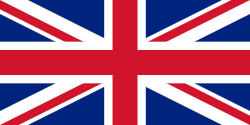 United Kingdom (1946–1948)
United Kingdom (1946–1948) - Jaime Torres Bodet,
 Mexico (1948–1952)
Mexico (1948–1952) - John Wilkinson Taylor,
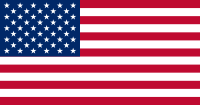 United States (acting 1952–1953)
United States (acting 1952–1953) - Luther Evans,
 United States (1953–1958)
United States (1953–1958) - Vittorino Veronese,
 Italy (1958–1961)
Italy (1958–1961) - René Maheu,
 France (1961–1974; acting 1961)
France (1961–1974; acting 1961) - Amadou-Mahtar M'Bow,
 Senegal (1974–1987)
Senegal (1974–1987) - Federico Mayor Zaragoza,
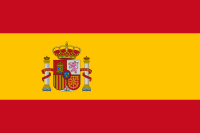 Spain (1987–1999)
Spain (1987–1999) - Koïchiro Matsuura,
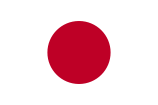 Japan (1999–present)
Japan (1999–present)
Locations
UNESCO has offices in many locations across the globe; its headquarters are located in Paris, France.
References
- ↑ UNESCO Constitution
- ↑ Grahm, S. E. (April 2006). "The (Real)politiks of Culture: U.S. Cultural Diplomacy in UNESCO, 1946–1954". Diplomatic History 30 (2): 231–251. doi:.
- ↑ Varga, Susan (2006). Edinburgh Old Town (Images of Scotland) (Images of Scotland). The History Press Ltd. ISBN 0-7524-4083-7.
- ↑ The Comenius Medal
External links
- UNESCO.org Official UNESCO website
- whc.unesco.org Official World Heritage website with the full World Heritage List and extensive databases
- portal.unesco.org UNESCO offices worldwide
- portal.unesco.org UNESCO Culture Sector
- unesco.org/webworld - Communication & Information Programme
- TooYoo UNESCO Red Book on Endangered Languages
- unescobkk.org Asia Pacific Heritage
- UNESCO Science Prizes
- UNESCO - Institute for Statistics
- Download UNESCO Education Data
- UNESCO - International Bureau of Education
- UNESCO - International Institute for Educational Planning
- UNESCO-UNEVOC International Centre for Technical and Vocational Education and Training
- UNESCO Nairobi Education Programme
- UNESCO.org Water sustainable development and conservation of freshwater resources in the world
- UNESCO Institute for Lifelong Learning
|
||||||||||||||||||||